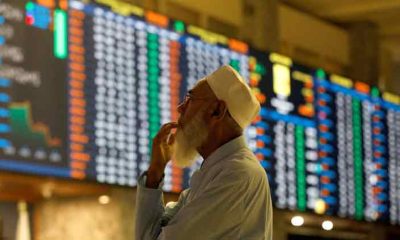Business
Gold clocks new record amid weakened dollar, possible end to rate hikes cycle
Gold clocks new record amid weakened dollar, possible end to rate hikes cycle

Business
FBR set to block SIMs of over 500,000 non-filers
FBR set to block SIMs of over 500,000 non-filers
Business
Oil falls for a third day amid easing Middle East tensions, increased production
Oil falls for a third day amid easing Middle East tensions, increased production
Business
Fiscal deficit in July-March 2023-24 touches Rs4,337bn
Fiscal deficit in July-March 2023-24 touches Rs4,337bn
-

 Sports3 months ago
Sports3 months agoSon and Bissouma ready for Spurs game with Brighton
-

 Sports3 months ago
Sports3 months agoSinisterra signs long-term deal with Bournemouth
-

 Fashion2 months ago
Fashion2 months agoGiorgio Armani catwalk blooms with florals at Milan Fashion Week
-

 pakistan3 months ago
pakistan3 months agoECP convenes emergency meeting today
-

 pakistan3 months ago
pakistan3 months agoECP rejects Salman Akram’s plea for PTI affiliation
-

 World2 months ago
World2 months agoTaiwan ally Tuvalu names Feleti Teo as new prime minister
-

 World2 months ago
World2 months agoTunisia court sentences ex-president Marzouki to 8 years in absentia
-

 Sports2 months ago
Sports2 months agoScaled-back opening ceremony for Paris Olympics to offer 326,000 tickets























